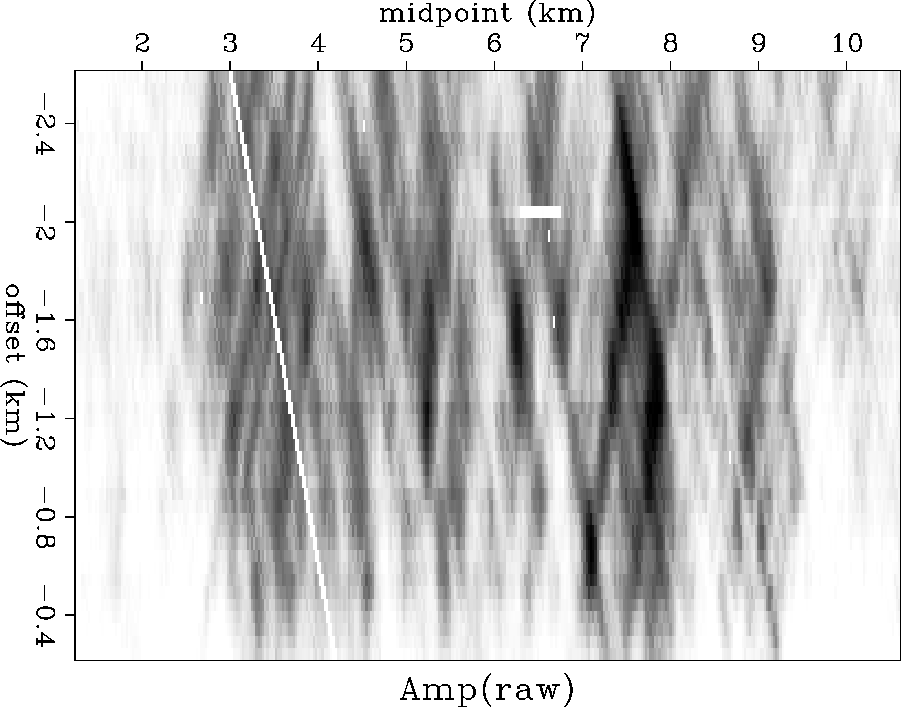 |
Figure 1 Kjartansson's Grand Isle data, root-mean-square energy in the time interval 2.0-2.6 sec, after NMO with velocity 2.05.
 |
Kjartansson interprets the tilt as a measure of depth of burial
of the anomaly and he slant stacks to provide a map of
anomaly depth versus midpoint.
(Actually he does better than slant stack,
he attempts a planar decomposition).
In Figure 1 there is a pronounced streak at a
![]() angle associated with a missing shot.
A missing shot is equivalent to perfect absorption directly under
the shot, so this
angle associated with a missing shot.
A missing shot is equivalent to perfect absorption directly under
the shot, so this ![]() streak corresponds to zero depth
under the shot.
Likewise, if we were to see a
streak corresponds to zero depth
under the shot.
Likewise, if we were to see a ![]() streak of opposite orientation,
it would correspond to zero depth under the geophone.
A vertical streak corresponds to absorption
at the reflector under the midpoint.
At any depth, there are two applicable angles, one tipping one way
(for shots) and one tipping the other (for geophones).
streak of opposite orientation,
it would correspond to zero depth under the geophone.
A vertical streak corresponds to absorption
at the reflector under the midpoint.
At any depth, there are two applicable angles, one tipping one way
(for shots) and one tipping the other (for geophones).
Kjartansson does not analyze anomalies with regard to whether they result from absorption or focusing, but those of us who have worked with migration for many years tend to regard all amplitude variations as focusing phenomena because focusing so easily gives amplitude variations. Kjartansson shows one NMO corrected CMP gather that clearly shows time shifts, but when he assembles a plane of times in midpoint-offset space, alignments of interesting events are not so clear as with amplitudes. His slant stack of this plane is disappointing compared to his amplitudes. (Those seismologists who believe that observational seismology gives reliable timing measurements but unreliable amplitude measurements will be surprised by Kjartansson's very convincing results.) In summary, Kjartansson's work showed clearly the locations of likely lateral-velocity variation anomalies, but provided no direct path toward building a best fitting velocity model.
A variety of factors led me to revisit this data and its analysis: Two members of our group had developed wave-equation datuming code and were about to struggle with the problem of estimating the velocity model. Computers are much more powerful than they were when Kjartansson did his work. Kjartansson's data (or a subset) were recently found and loaded on our machines. My recent research direction, data adaptive multidimensional filters (DAMF), encouraged me to believe that I could readily accomplish potentially complicated corrections, prediction of one shot profile from another, for example, without need for an elaborate theory. I suspected that DAMF might provide the missing components needed to create a near surface (top 500 ms) lateral velocity variation model using only its distortion of deep reflections and so I set out to try.
Figures 2-4 show various slant-stack like transformations of the logarithm of the amplitude in Figure 1.
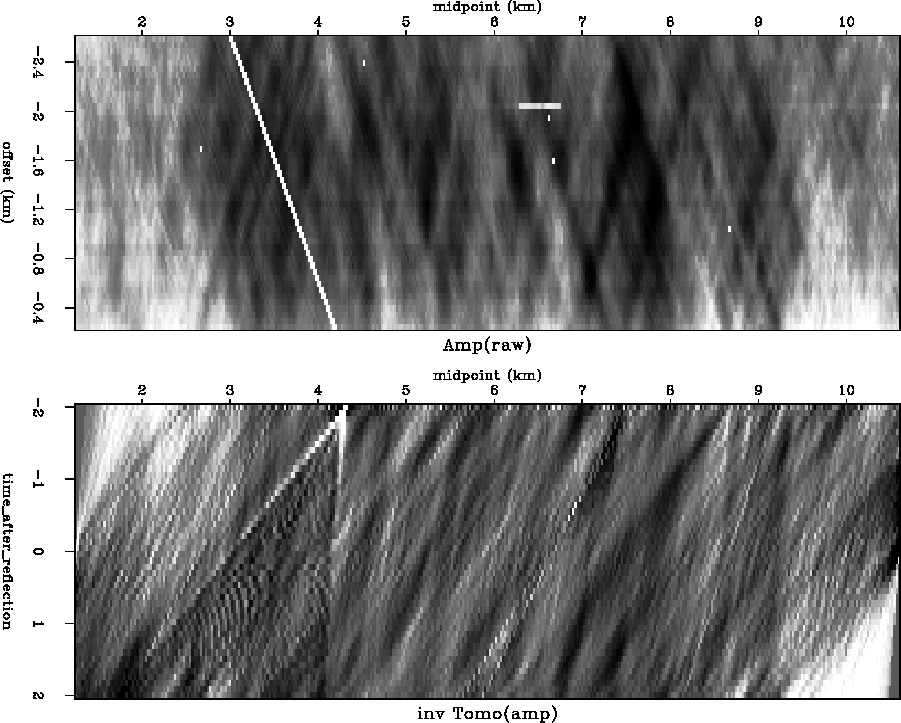 |
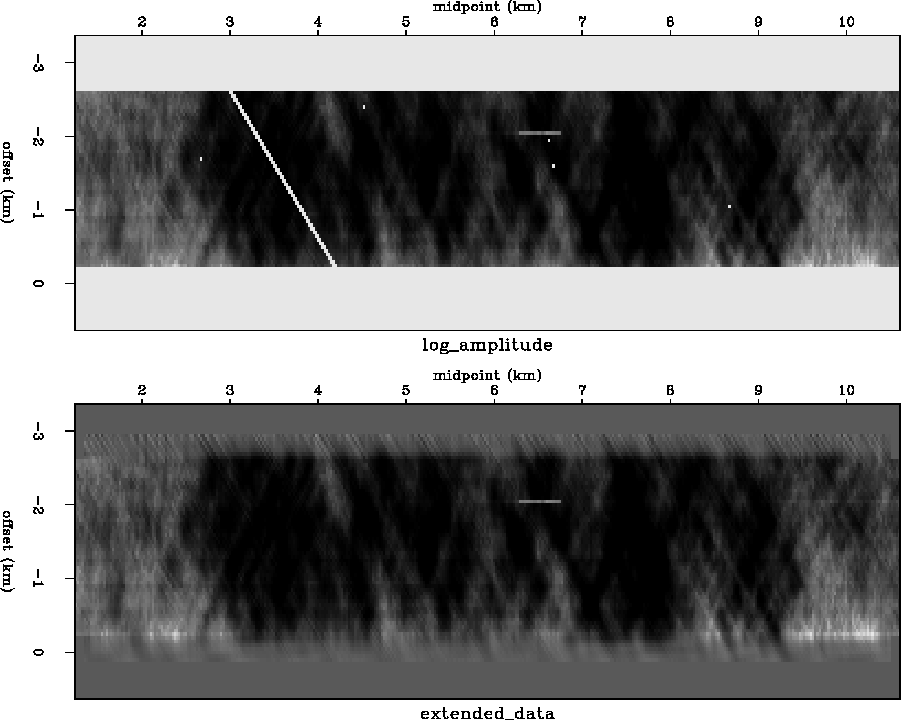 |
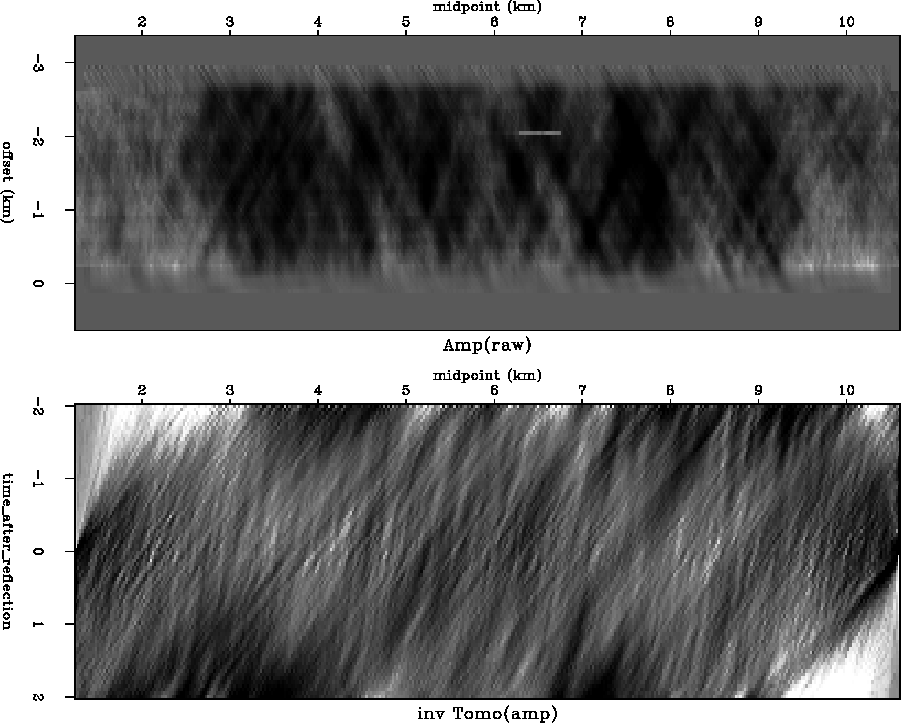 |
To mimic Kjartansson's plot of amplitude versus midpoint and depth, I folded and summed the bottoms panels of each of Figure 2 and Figure 4 about t=0 thereby combining information from the upgoing and downgoing path. The result is shown in Figure 5.
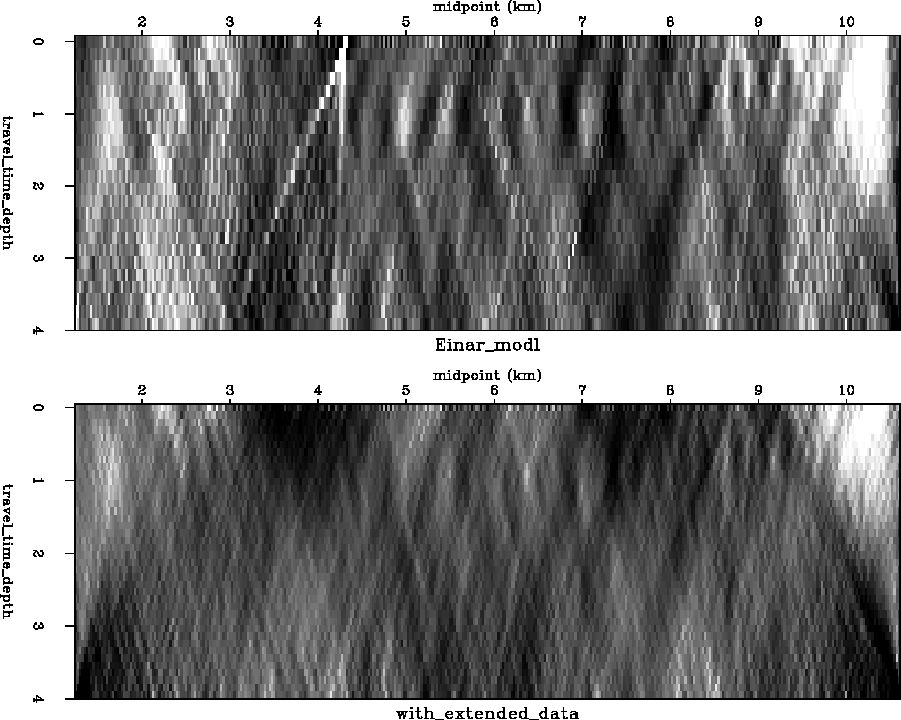 |